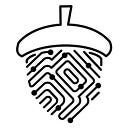Team Ophelia — tackling wildfires
Why did we choose to pursue our project?
The first time we met as a team, we discussed different problems that we observed around us and how AI can be a useful tool for mitigating these issues. At the time, the effects of climate change were ever prevalent in the news. It occurred to us that we are the generation who is going to have to deal with the fall out. This is why we chose to focus on the climate action SDG. But what exactly can we do to contribute to solving the climate change problem? If we went carbon neutral now we will still see the effects of climate change get worse before it gets better, so either way we will have to come up with a technology to help lessen the effects. Natural disasters are caused by climate change, flooding and fires. At the same time, natural disasters increase climate change. That is a loop of negative effects. One of our team members was from Turkey; he told us about the devastating effects of wildfires in his country. From all the numbers and facts, we concluded that wildfires are an important issue to address.
How did we choose resource allocation?
There are many elements included in wildfire fighting. We did a literature review and spoke to people from wildfire operations and found that there are three main problems: lack of resources, lack of information and poor heat of the moment decisions. Doing more research, we found that the former two are being tackled with more funding and satellite data, but heat of the moment decisions have no prior solutions. To confirm this, we looked at one of the reports from California Department of Forestry and Fire Protection (CAL FIRE) and it was clear that the usage of resources, including time, was vulnerable to human error, leading to many inefficient and ineffective decisions.
How did we execute our project?
After confirming the problem, we started thinking of the solution. Since human error was the reason behind the poor decisions, we decided to create a software that uses AI to optimize resource allocation. Before working on the AI, we had to create the simulation that the AI will use to verify the best strategies. We used a grid with multiple layers of satellite data (i.e. vegetation, wind, altitude, etc.) for the simulation, using the Los Loma location in New mexico. To simulate the spread of the fire from these data, we assigned a fire occurrence probability to each square on the grid and defined a set of equations to find how these data affect the probability. After we finished the simulation, we created the AI that manages one type of intervention as a start, fire line. The AI is a reinforcement learning model based on genetic algorithms. It uses the simulation to find the best fit for a fire line through survival of the fittest individual in a generation. While working on the simulation and AI, one of our team members developed the front end of the software.
What issues did we have whilst pursuing it and how did we over come them?
Of course, we faced a lot of challenges while going through these steps. We had difficulties in finding contacts for people from wildfire operations. However, we kept using online forums extensively until we were able to successfully find the information we needed. Also, validating the problem and finding the market gap took us half of the accelerator period; we didn’t start development of the software until last week. The equations we developed for modelling the fire spread required precise consideration of all of the factors that could affect the fire and the way they did so, for example, figuring out how to accurately measure the wind direction effects on fire spread and creating realistic impacts for interventions. Furthermore, we had to think of the heuristics according to which the genetic algorithm would find the best individuals in a generation.
Steps for the future?
We truly believed in our project and the impact it can have. Thus, we have future plans for it. We will connect the backend of the software with its frontend, and add more interventions other than fire lines that the AI can use for combating wildfires. We plan to use Generative Adversarial Networks (GANs) for improving the heuristics of the AI. Our end objective will be using real data and user interaction to test the software and improvise it.
